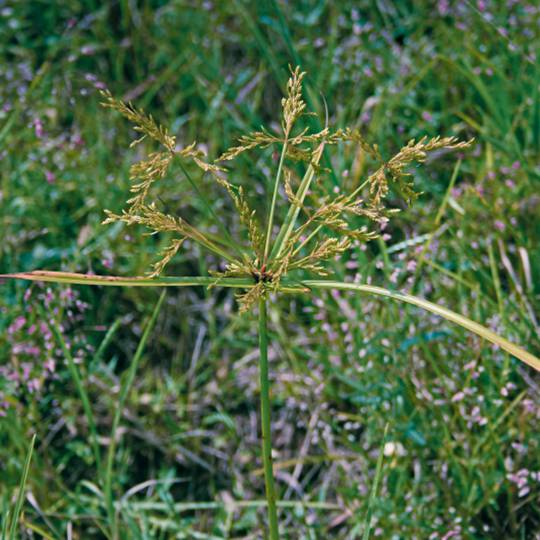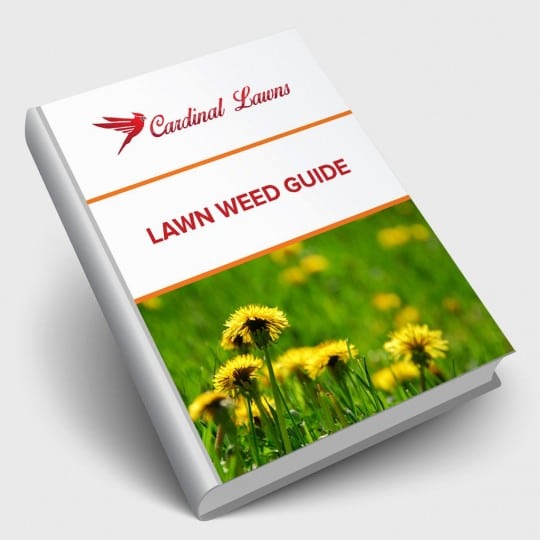How to Kill Nutsedge Before it Drives You to the Edge
Posted
September 15, 2016

You really want to kill nutsedge? Here’s how, according to organic gardener and arborist Howard Garrett: “First, dig out every tiny piece of the plant including the seeds and nutlets. Then, sift the soil through a mesh screen. Then dump the collected material on the driveway and burn it. Next, sweep up all the ashes and seal in a concrete box. Drive to the coast and dump the sealed box 20 miles off shore.”
Hes hardly exaggerating. Nutsedge, also called nutgrass, is notoriously hard to control. Why? It reproduces by seed, rhizomes, and the underground tubers from which it gets its “nutty” name.
About Nutsedge
There are over 600 species in the nutsedge genus (“Cyperus”). The large weedy ones are yellow and purple nutsedge. Yellow has light, straw or yellow colored leaves and one tuber per rhizome. Purple has darker leaves, a chain of football-shaped tubers on each rhizome and is considered a much more problematic weed. Both the yellow and the purple species crowd out desirable plants and can quickly take over a lawn.
Nutsedge weeds feels most at home in an excessively wet soil. These plants thrive under constantly wet feet. They are most commonly found in overwatered lawns with poor drainage.
Here are our three top tips on how to kill nutsedge and prevent its return:
Improve the Soil to Kill Nutsedge
If your lawn, like many lawns, has low quality, unamended soil, aerate the turf to improve soil drainage. Fill the holes with compost. Next, amend the soil with additional compost to improve overall soil quality. (Note: you should also consider Cardinal Lawns’ professional aeration services.) Try applying corn gluten meal to the lawn in the spring (the kind labeled as pre-emergent herbicide, not the animal feed kind, which isn’t high enough in protein to be effective). The corn gluten meal treatment will help keep your grass thick and prevent the nutsedge seeds from germinating. In addition, you can improve the soil and lawn by watering judiciously. Do NOT overwater if you are trying to kill nutsedge.
Remove the Baby Nutlets to Kill Nutsedge
Another method we recommend to control a nutsedge invasion is the foolproof, yet time consuming soil replacement technique. Simply put, you remove the soil all around each weed, down to 18 inches, and replace it with nutgrass-free soil. Don’t bother trying to save the soil by filtering it through a screen. The teensiest, tiniest baby nutlets will find their way through, and they will start the problem all over again. Yes, this method involves a lot of work, and you’ll waste soil. But at least you’ll sleep better at night, knowing that the nutsedge, and all of its microscopic nutlet offspring, are out of your backyard.
Kill Nutsedge With Herbicides
Herbicides such as Bonide Sedge Ender do work, but you must apply them carefully and sometimes more than once. The correct number of applications will depend on weather conditions and severity of infestation.
In conclusion, nutsedge can easily make any homeowner nuts. If you aren’t comfortable applying chemicals or just want guidance on how to best eliminate this weed from your landscape, contact Cardinal Lawns at 614-808-4446. We will be happy to talk you down off the “edge” and make your lawn healthy, beautiful, and free from the dreaded nutsedge.

Download Your FREE Lawn Weed Guide
Before weeds take over your yard this season, learn to identify and prevent them in the first place. Keep your lawn looking great all year!